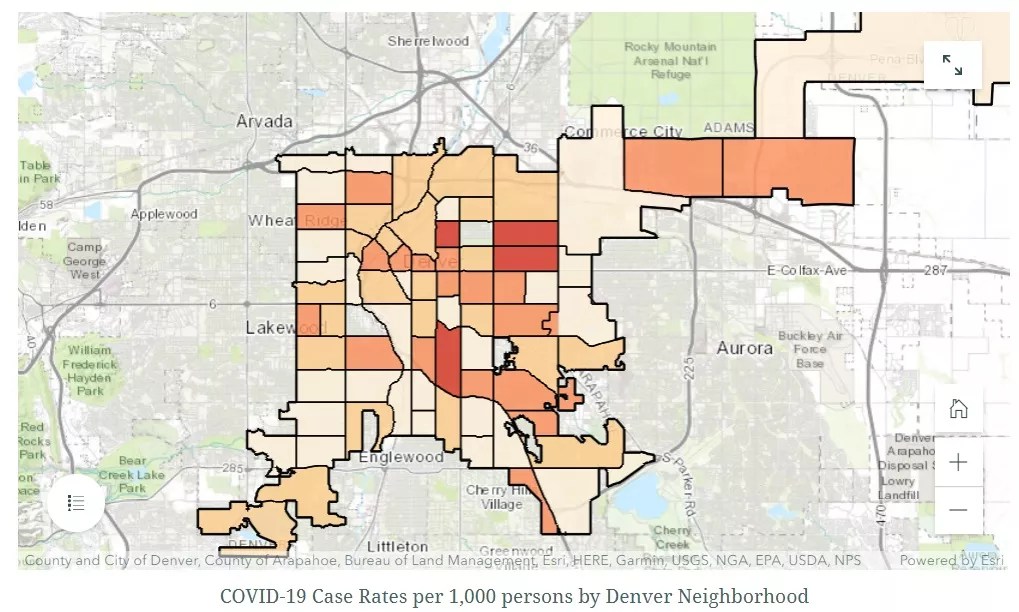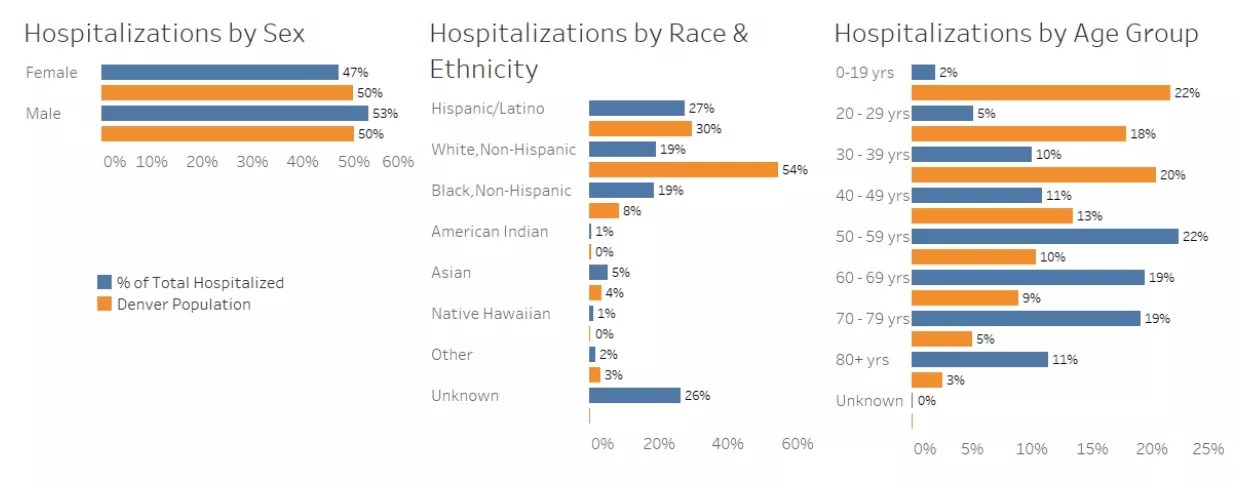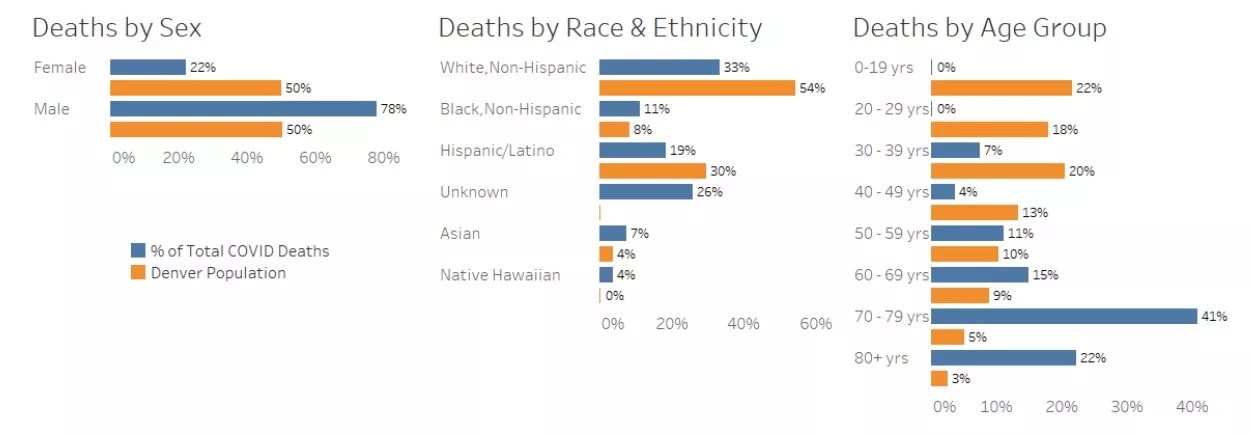

Audio By Carbonatix
To keep residents more informed about COVID-19‘s local spread, Denver Public Health has launched a new web tool offering updated information about case numbers in neighborhoods and infection rates among different demographic, racial and ethnic groups.
The site, updated on April 12, counts 1,299 cases in Denver, as well as 351 hospitalizations and 52 deaths among the 290 recorded for the entire state by the Colorado Department of Public Health and Environment.
Other revelations include the location of Denver infection hot spots, as well as distressing indications of inequities related to the human impact of the novel coronavirus.
The most interactive feature on the DPH page is a map that allows users to get the latest data about each neighborhood in Denver. The graphic uses four basic color schemes, with the lightest designating neighborhoods with the lowest number of COVID-19 cases per 1,000 people and the darkest representing those with the highest current totals.

A screen capture of the COVID-19 Denver neighborhood infection map for April 12.
Among the neighborhoods with the lowest infection rates at present are Mar Lee, which has seven cases and a so-called case rate of 0.51, and Stapleton, with eighteen cases and a case rate of 0.67.
Cherry Creek and Five Points land in the second-lowest category; the former has registered seven cases and a 0.89 case rate, while the latter has recorded 23 cases and a case rate of 1.10.
The next bracket includes Gateway/Green Valley Ranch, with 55 cases and a 1.30 case rate, and Montbello, with 52 cases and a case rate of 1.53.
Four Denver neighborhoods land in the segment with the highest infection rates: Whittier (ten cases, 1.85 case rate), North Park Hill (nineteen cases, 1.85 case rate), Washington Park (fourteen cases, 1.86 case rate) and South Park Hill (eighteen cases, 1.88 case rate).

Other data breaks down COVID-19 cases by sex, race and ethnicity, and age group. This depiction shows a near-equal division of infections for men and women, and fewer cases targeting Hispanics/Latinos and Caucasians (identified as white, non-Hispanic) than would be expected based on their percentage of the overall population. But that’s not the case for the black community, whose 13 percent infection rate is greater than the 8 percent of Denver residents the group represents.
As for age groups, those nineteen and younger are the least likely to have tested positive for COVID-19 – this demographic accounts for 22 percent of the population but just 1 percent of the cases. People in their thirties have tested positive most frequently: This group accounts for 20 percent of the cases, and also 20 percent of Denver’s as a whole. And positive tests for those in their sixties and seventies, as well as those eighty or older, are disproportionately higher than their percentage of the population.

The hospitalization charts reinforce the statistics. White non-Hispanics are calculated at 19 percent of hospitalizations but 54 percent of Denver’s population – a huge disparity. In contrast, black residents constitute 8 percent of the citizenry but 19 percent of those hospitalized.
Likewise, each age group over fifty has suffered far more hospitalizations than its percentage of the population would suggest – nearly four times higher among those in their seventies.

In terms of death rates in Denver, men are much more likely to lose their lives after contracting the novel coronavirus than are women; men account for 78 percent of the casualties, and women only 22 percent.
When it comes to race and ethnicity, only blacks are dying in numbers greater than their percentage of the population. As for age, no one younger than thirty has died from COVID-19 in Denver thus far – but those in their thirties count for 7 percent of fatalities. The tragedies are much more common for residents in their seventies (41 percent of the deaths, 5 percent of the population) and eighties (22 percent of deaths, 3 percent of the population).
The CDPHE hopes to start sharing similar figures on a statewide basis this week. “Health equity is a core value for the State of Colorado,” a department spokesperson stresses. “Having this data will help us be aware of whether there are any health inequities related to population groups.”
If Denver’s statistics are any indication, a lack of equality in assorted areas will be among the findings.